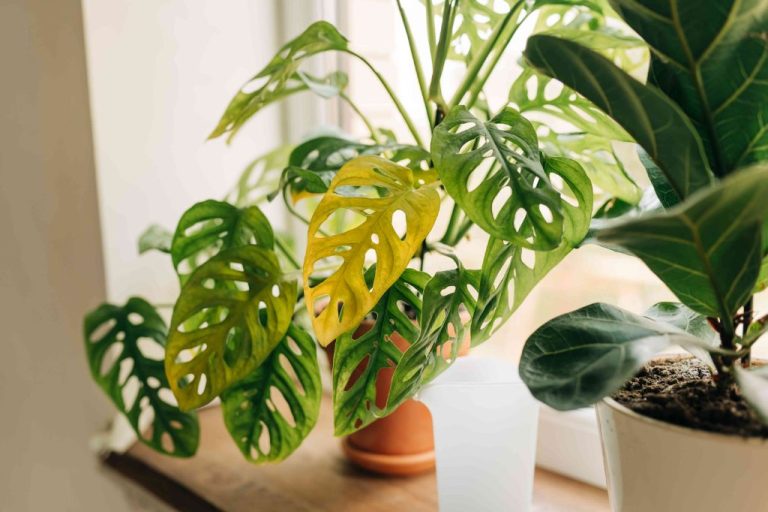How To Care For Your Christmas Cactus: Essential Tips
The Christmas cactus (Schlumbergera bridgesii) is a popular houseplant native to the jungles of Brazil. Its common name comes from the fact that it blooms beautifully around the Christmas season when the days are shorter. With its vibrant flowers and lush green leaves, it’s easy to see why the Christmas cactus is such a beloved houseplant.
Caring for a Christmas cactus requires paying attention to factors like water, light, temperature, and humidity. Providing the right growing conditions will allow it to thrive indoors and reward you with gorgeous holiday blooms. This guide covers everything you need to know about looking after your Christmas cactus.
We’ll go over the ideal environment, how to water and fertilize, when to repot, tips for encouraging flowering, how to propagate new plants, and what to watch out for in terms of pests and diseases. Follow these essential Christmas cactus care tips and you’ll have a happy, healthy plant.
Ideal Growing Conditions
Christmas cacti thrive in bright indirect to medium indirect sunlight. Place them near an east, west, or south-facing window. Avoid direct hot midday sun, which can scorch the leaves (The Sill, 2022).
These plants prefer daytime temperatures between 65-75°F and around 60°F at night. Keep them away from hot or cold drafts from heaters, air conditioners, or fireplaces (Sugar Creek Gardens, 2022).
Christmas cacti enjoy moderate humidity levels of 50-60%. Use a pebble tray or humidifier to increase moisture in the air. Misting the leaves can also help boost humidity temporarily (The Sill, 2022).
Watering
Christmas cacti need less frequent watering than many other houseplants. Water them about every 1-2 weeks, allowing the soil to dry out at least halfway between waterings. When in active growth, water when the top 1-2 inches of soil are dry according to The Sill.
Signs of underwatering include drooping, wrinkling, and limp leaves. The plant may also drop buds and flowers. Overwatering can cause leaves to turn yellow or brown and drop off. Root rot due to excess moisture is one of the most common causes of death for Christmas cacti. Check the soil with your finger before watering and only water when needed.
Water Christmas cacti thoroughly until water drains from the bottom of the pot. Allow excess water to drain completely after watering. Avoid getting water on the flattened stem segments where new growth emerges.
Fertilizing
Fertilizing your Christmas cactus properly is key to keeping it healthy and promoting flowering. Use a balanced houseplant fertilizer that is diluted to half strength. Good options include Schultz Cactus Plus Liquid Plant Food or Miracle-Gro Succulent Plant Food.
Fertilize monthly during the active growing season, typically from April through September. Discontinue fertilizing in October to allow the plant to harden off for its dormant period. Never fertilize a Christmas cactus while it is blooming, as this can cause the flowers to drop prematurely.

When fertilizing, dilute the fertilizer to half strength and apply it to moist soil. Pour the diluted fertilizer over the soil until it runs through the drainage holes at the bottom of the pot. This ensures the roots get thoroughly saturated. Never apply fertilizer to dry soil.
Repotting
Repotting your Christmas cactus every 2-3 years in the spring or summer helps keep it healthy and encourages flowering. Pick a pot that’s only 1-2 inches larger than the current pot so the roots don’t sit in wet soil. Make sure the new pot has drainage holes. Use a porous potting mix made for cacti and succulents, like a mix of equal parts potting soil, peat moss, and perlite or sand. Or you can purchase a commercial cactus/succulent potting mix (Source).
To repot, gently remove the plant from its pot and loosen any bound roots with your fingers or a knife, taking care not to damage the roots. Place the plant in the new pot and fill with soil around the roots, firming the soil gently with your hands. Water thoroughly after repotting to settle the soil.
Pruning
The best time to prune your Christmas cactus is about a month after it blooms, generally between January and March. This is when the plant enters a rest period after flowering. Pruning at this time allows the cut ends time to heal before new growth starts in the spring.
To prune properly, use a clean, sharp knife or scissors to remove 1-2 segments from the end of each stem by twisting them off at the natural joints or gaps between segments. Be careful not to damage any remaining segments. Cutting back long, leggy stems helps encourage bushier, compact growth. According to WikiHow, remove no more than 1/3 of the total plant each time to avoid stressing it.
Avoid pruning during active growth periods in the spring and summer, as this can lead to excessive scarring. It’s also best not to prune immediately before or during flowering, as this may reduce blooms. Proper pruning encourages future flowering and a healthy, manageable size and shape.
Blooming
Christmas cacti bloom for several weeks between late November and January in their native habitat, which experiences cooler and drier conditions during this time of year. To encourage your Christmas cactus to bloom indoors, it’s important to mimic these natural conditions.
Starting in early October, provide 12-14 hours of uninterrupted darkness each night and keep temperatures between 60-68°F to initiate bud development. Make sure the plant does not receive any artificial light during its dark period. Continue the short days and cool temps through December to encourage the most prolific flowering [1].
Once buds form, you can increase light levels and temperatures slightly to encourage the buds to open. Misting the plant daily and keeping the soil moderately dry will also promote flowering. Discontinue fertilizer in late fall until blooming concludes [2].
Propagation
The best and easiest way to propagate a Christmas cactus is by taking cuttings from an existing healthy plant. There are a couple methods you can use:
Take 4-6 inch cuttings from the ends or segments of the plant, making sure there are 2-3 leaf segments per cutting. Allow the cut end to callus over for a few days, then place the cuttings in potting mix or water to root. Refer to this source for step-by-step instructions.
You can also gently twist off segments from the plant rather than cutting them. Place these directly into soil or water and they will root. This method is detailed here.
The best time to propagate a Christmas cactus is in spring after it has finished blooming. However it can be done successfully any time the parent plant is healthy and actively growing.
Within a few weeks to months the cuttings will root and grow into new plants, which can then be transplanted. Propagating Christmas cactus is an easy way to create duplicates of mature plants.
Pests and Diseases
Christmas cacti can be affected by several common houseplant pests like mealybugs, scale, and spider mites. Mealybugs and scale look like small bumps on the plant and can spread quickly, sucking sap and weakening the Christmas cactus (Bloombox Club). Spider mites are tiny pests that form webs on the plants. Left untreated, pests can seriously damage and even kill the Christmas cactus.
To prevent pests, isolate any new plants for a few weeks and inspect thoroughly for signs of bugs. Keep the Christmas cactus in a well-ventilated area away from other plants. Dust the leaves occasionally with a soft cloth or cotton swab to remove any bugs. Spray neem oil or insecticidal soap on the Christmas cactus every week or two as a preventative (Penn State Extension).
If pests do strike, take the plant outdoors and spray it thoroughly with water to wash away bugs. Use neem oil or insecticidal soap as directed until the infestation clears. For severe infestations, use horticultural oil or systemic pesticides. Isolate the affected plant from others.
Diseases like botrytis, rust, and bacterial soft rot can also impact Christmas cacti. Provide proper watering, ventilation, temperatures and care to prevent most diseases. Discard any diseased parts immediately to avoid spreading issues. Use fungicides if fungal diseases are detected.
FAQ
Here are some frequently asked questions about caring for your Christmas cactus:
Why are the leaves on my Christmas cactus limp?
Limp or drooping leaves on a Christmas cactus are typically caused by under watering. Christmas cacti prefer more regular watering than other cacti, especially when actively growing. Make sure to water your plant thoroughly whenever the top inch of soil feels dry. Overwatering can also cause drooping leaves, so don’t keep the soil constantly wet.1
When is the best time to repot a Christmas cactus?
The best time to repot a Christmas cactus is in the spring, after it finishes blooming. Repotting encourages healthy growth before the next bloom period. Use a pot that is about 2 inches larger than the current container with well-draining potting soil. Avoid repotting in the fall when the plant is preparing to bloom.2
How do I get my Christmas cactus to bloom?
Christmas cacti bloom in response to shorter daylight hours and cooler temperatures. Starting in October, keep the plant in a space with temperatures between 50-65°F and provide 12-14 hours of darkness each night. Make sure not to overwater while it’s preparing to bloom. Once it begins blooming, you can bring it back into normal household temperatures.2





